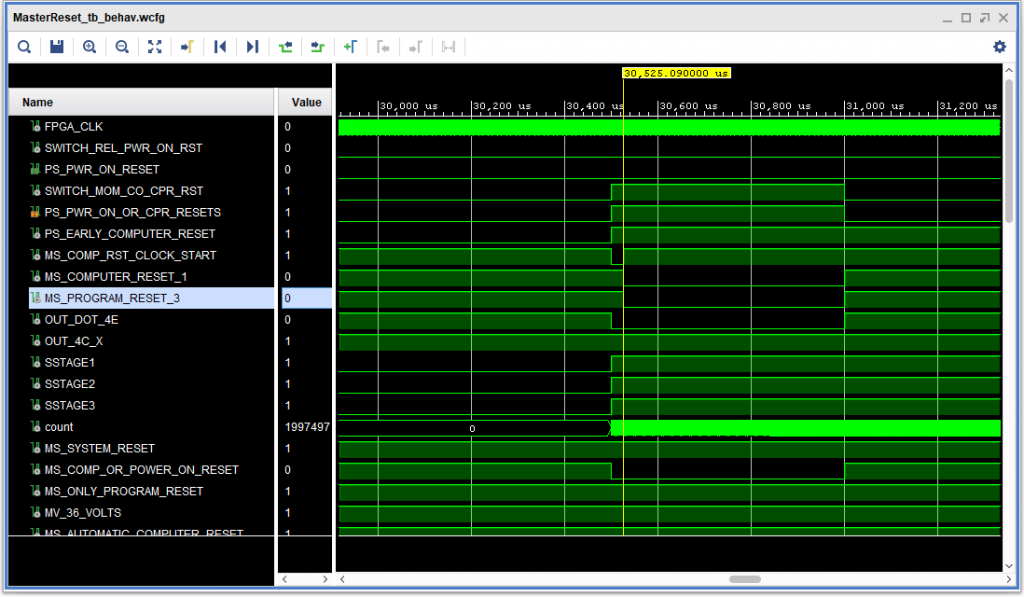Volume IV now joins Volumes II and III as having had its Automated Logic Diagrams (ALDs) generated into VHDL and tested.
One interesting situation popped up on this volume, with respect to some missing pages. I was really struggling to test pages for the E and F channel File Controls, particularly the E and F Channel End of 2nd Addr Transfer (which is used to verify that the disk head is in the right place.) The relevant sheets (13.72.01.1 for the E channel and 13.73.01.1 for the F Channel) both depend on signals that potentially come from different kinds of disk drives: 1301, 1405 and 1311. These feed into logic that drives a trigger, and what was really confusing was that they were using one common set of signals to both set and reset the trigger – which, left on its own, would simply switch back and forth between its on and off states. I finally figured out that the signals coming from the 1311 were designed as relatively short-lived signals that would go away once the trigger was set. It was all complicated by the fact that three sheets relating to the 1311, 13.73.03.1, 13.73.04.1 and 13.73.05.1 are not in my diagram set – presumably they were only supplied with machines that had the relatively late-coming (from the 1410’s point of view) 1311 disk drives.
So, while I could probably figure out how to make 1301 and 1405 disk drives interface to the CPU work the same way that they did back in the day, doing that with 1311 disks would provide a considerable challenge – I know what signals went in and out of each of those pages (aside from any that appeared on just those three pages), figuring out the logic with only the gate information to guide me would be tricky.
I also found a mistake I had made entering the data on one of the sheets for the B address register, which was easy to fix. (Unfortunately, I no longer recall exactly what the error was). Typos on signal names aside, I can count such errors on one hnad.
Finally, a kind of humorous note. The 1410 could be equipped with a “Real Time Clock”. This was a motor drive set of cams and switches that could be read under program control, storing a 4 digit number: HH:hh (HH is hours, hh is hundredths of an hour – but only to 2 hundredths of an hour resolution). This is described in the 1411 CPU Instruction-Reference 1411 Processing Unit Instructions and Special Features manual, S223-2698. On page 110 of that manual is a little picture, with dials representing the cam switches. Some engineer though it would be cute to set the time to “1410”, and the dials show those digits starting at the top, Unfortunately, the dials on the diagram are such that the top is the least significant digit, so the actual time would have read out as 0141, or 1AM plus 41 hundredths of an hour, not 2:10 PM. 😉
Volume IV has lots of registers, so the generated logic now includes many of the machine’s address registers.

